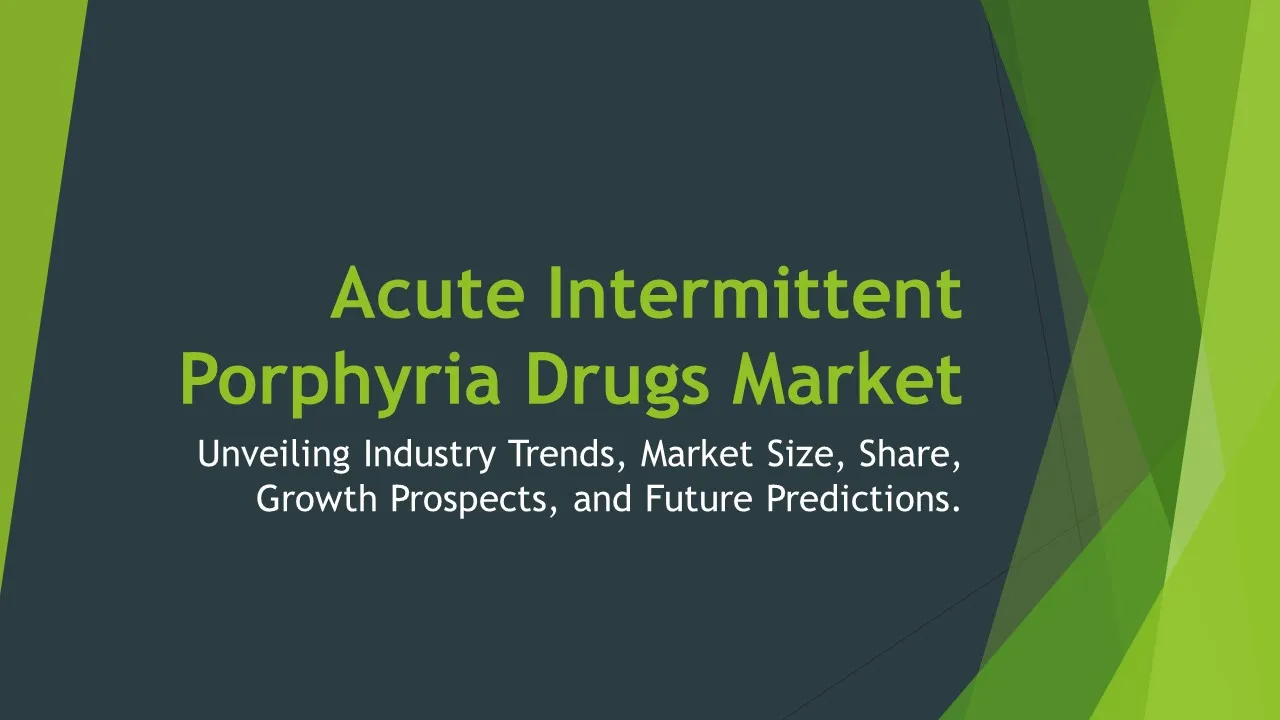PAP and Paracetamol
PAP and Paracetamol Market Segments - by Product Type (PAP, Paracetamol Tablets, Paracetamol Syrup, Paracetamol Injectable, Paracetamol Capsules), Application (Fever & Pain Management, Cold & Flu, Headache, Others), Distribution Channel (Online Stores, Hospitals & Clinics, Retail Pharmacies, Others), Ingredient Type (PAP, Paracetamol), and Region (North America, Europe, Asia Pacific, Latin America, Middle East & Africa) - Global Industry Analysis, Growth, Share, Size, Trends, and Forecast 2025-2035
- Report Preview
- Table Of Content
- Segments
- Methodology
PAP and Paracetamol Market Outlook
The global PAP and Paracetamol market is estimated to reach approximately USD 10.5 billion by 2035, growing at a CAGR of around 4.7% from 2025 to 2035. This growth is driven by the increasing prevalence of fever and pain-related disorders, alongside the rising awareness and accessibility of over-the-counter medications. Moreover, the expanding global population, particularly in emerging economies, is augmenting the demand for pain relief products. Additionally, the pharmaceutical industry is increasingly investing in research and development to formulate innovative paracetamol-based products, which further propels market growth. The rising trend of self-medication among consumers is also significantly influencing the expansion of the PAP and paracetamol market.
Growth Factor of the Market
Several factors are contributing to the robust growth of the PAP and Paracetamol market. The primary factor is the increasing incidence of chronic diseases and conditions such as arthritis and migraines, which necessitate effective pain management solutions. Furthermore, the rise in the aging population globally is leading to a higher demand for pain relief medications, as older individuals often experience higher incidences of pain-related ailments. The convenience of paracetamol as a widely used over-the-counter medication also adds to its appeal, as it is easily accessible without a prescription. Additionally, consumer trends towards self-medication and the growing preference for non-opioid analgesics due to the opioid crisis have positioned paracetamol as a preferred choice for pain relief. Moreover, advancements in manufacturing technologies and the introduction of new formulations are enhancing the therapeutic efficacy of paracetamol, making it more appealing to healthcare professionals and patients alike.
Key Highlights of the Market
- The global PAP and Paracetamol market is projected to reach USD 10.5 billion by 2035.
- CAGR of approximately 4.7% anticipated during the forecast period of 2025 to 2035.
- Rising prevalence of pain-related disorders is driving market growth.
- Increasing consumer trend towards self-medication is enhancing market demand.
- Innovative formulations and R&D investments are expected to further fuel market expansion.
By Product Type
PAP:
PAP, or Para-Aminophenol, is a vital ingredient used in the production of paracetamol, and it holds a unique position in the market. PAP is primarily used for its analgesic properties and serves as a precursor in the synthesis of paracetamol. The growing demand for paracetamol in various formulations is directly influencing the PAP segment's growth. The pharmaceutical industry is seeing a rise in demand for high-quality PAP, which is crucial for ensuring the efficacy and safety of paracetamol-based medications. Moreover, the increased emphasis on quality control and regulatory compliance in drug manufacturing is further propelling the PAP market. The research into novel uses of PAP beyond pain management is also creating new opportunities, thereby contributing to the segment's growth.
Paracetamol Tablets:
Paracetamol tablets are among the most commonly used forms of paracetamol medications globally, owing to their ease of use and fast-acting nature. The tablets are widely available, making them a popular choice for consumers seeking effective relief from pain and fever. The convenience of tablet formulation, along with the growing emphasis on self-medication, is propelling the demand for paracetamol tablets. Furthermore, innovations in tablet formulations, such as extended-release options, are enhancing their appeal to consumers. The robust distribution channels and marketing strategies adopted by pharmaceutical companies also contribute significantly to the sales of paracetamol tablets, ensuring widespread availability.
Paracetamol Syrup:
Paracetamol syrup is particularly favored in pediatric medicine due to its palatable flavor and ease of administration for children who may have difficulty swallowing tablets. This form has seen a growth in market demand, driven by the increasing awareness of fever management in children. With parents increasingly seeking effective and safe solutions for their children's health, paracetamol syrup has become a preferred choice. Additionally, the syrup formulation allows for flexible dosing, which is essential for treating younger patients whose weight and age vary significantly. The marketing efforts targeting parents and caregivers have also contributed to the segment's growth, highlighting the importance of effective fever and pain management for children.
Paracetamol Injectable:
Paracetamol injectables are primarily used in hospital settings for patients who require rapid pain relief or have difficulty taking oral medications due to nausea or other conditions. This segment is experiencing growth due to the rising number of surgical procedures and the need for effective postoperative pain management. Injectable formulations provide immediate relief, making them essential in emergency care settings. The ongoing advancements in injectable technologies and formulations are also enhancing the market's appeal, as they ensure better patient compliance and faster therapeutic effects. With the increasing focus on patient-centered care, the demand for injectable paracetamol is expected to rise significantly in the coming years.
Paracetamol Capsules:
Paracetamol capsules offer an alternative delivery method for patients who prefer capsules over tablets for various reasons, including ease of swallowing and digestibility. The capsules provide a controlled release of the medication, which can enhance therapeutic outcomes. The segment has witnessed steady growth, driven by innovations in capsule formulations that improve bioavailability and patient adherence. Pharmaceutical companies are increasingly focusing on developing capsule formulations that cater to specific consumer needs, like vegetarian capsules, which are becoming increasingly popular among health-conscious consumers. The marketing strategies highlighting the benefits of capsule forms, such as convenience and efficacy, are anticipated to bolster the growth of this segment.
By Application
Fever & Pain Management:
The application of PAP and paracetamol for fever and pain management represents a significant portion of the market, driven by the increasing prevalence of conditions such as headaches, muscle pain, and fever due to infections. Paracetamol is often recommended as the first-line treatment for mild to moderate pain and is widely recognized for its effectiveness and safety profile. The growing awareness of pain management strategies among healthcare providers and patients is further bolstering this segment. Additionally, the rising incidence of chronic pain conditions across different age groups is expected to fuel demand for paracetamol-based products specifically for pain relief, thus enhancing the market landscape.
Cold & Flu:
The cold and flu application segment is also a significant contributor to the PAP and paracetamol market, particularly during seasonal outbreaks. Paracetamol is commonly incorporated into various cold and flu formulations due to its effectiveness in alleviating symptoms such as fever and body aches associated with these conditions. The growing incidence of respiratory infections globally is driving demand for effective cold and flu medications that often include paracetamol. Moreover, the increasing trend of consumers seeking multi-symptom relief products is benefiting the cold and flu application segment, as paracetamol is often combined with other active ingredients. This segment is expected to grow further with the rise in seasonal illnesses and the need for effective symptomatic treatment.
Headache:
The headache segment represents a vital aspect of the PAP and paracetamol market, as headaches are one of the most prevalent ailments affecting people across different demographics. Paracetamol is frequently recommended by healthcare providers as a safe and effective treatment option for various types of headaches, including tension headaches and migraines. The increasing awareness and initiatives aimed at educating consumers about headache management strategies are further propelling this segment. Furthermore, the rise in lifestyle-related factors such as stress, insufficient sleep, and screen time is leading to an increase in headache occurrences, thereby enhancing the demand for paracetamol products specifically marketed for headache relief.
Others:
This segment encompasses a variety of applications where PAP and paracetamol can be used, including muscle pain, dental pain, and postoperative pain management. The versatility of paracetamol as an analgesic makes it applicable in many different scenarios, catering to diverse consumer needs. The growing trend of self-medication and increasing consumer awareness regarding the various uses of paracetamol are driving demand in this segment. Additionally, the rise of fitness and wellness trends is leading to an increased focus on pain management solutions for athletes and active individuals, thus expanding the market scope for paracetamol products in this area.
By Distribution Channel
Online Stores:
Online stores have emerged as one of the most significant distribution channels for PAP and paracetamol products, especially in the wake of the COVID-19 pandemic, which has accelerated the trend towards e-commerce. The convenience of purchasing medications from the comfort of one's home, coupled with the availability of detailed product information and customer reviews, has made online shopping a preferred choice for many consumers. E-commerce platforms often provide competitive pricing and exclusive deals, further enticing customers to buy paracetamol products online. The growing penetration of smartphones and the internet in emerging markets has also opened new avenues for online sales, making this channel a critical element of the distribution landscape.
Hospitals & Clinics:
The hospitals and clinics channel remains a crucial distribution point for PAP and paracetamol products, particularly for injectable formulations and prescription-based medications. Hospitals are significant consumers of paracetamol for managing pain in surgical patients and those with acute conditions. The integration of paracetamol in various therapeutic protocols within clinical settings further emphasizes its importance in pain management. As healthcare providers increasingly adopt patient-centered approaches, the demand for effective and safe analgesics like paracetamol will continue to drive the growth of this distribution channel. The ongoing investments in healthcare infrastructure globally will also contribute to the expansion of the hospitals and clinics distribution segment.
Retail Pharmacies:
Retail pharmacies represent a traditional yet vital distribution channel for PAP and paracetamol products, providing easy access for consumers seeking over-the-counter medications. The vast network of retail pharmacies ensures widespread availability of paracetamol in various formulations, including tablets, syrups, and capsules. The role of pharmacists in guiding consumers towards appropriate pain management solutions, along with the emphasis on customer service, enhances the retail pharmacy segment. Additionally, promotional efforts, loyalty programs, and community health initiatives undertaken by pharmacies are driving sales in this channel, making it an essential contributor to the overall market.
Others:
This category includes various other distribution channels such as supermarkets, hypermarkets, and specialty health stores. These outlets cater to a diverse customer base seeking convenience and accessibility for their medication needs. The presence of paracetamol products in supermarkets and hypermarkets is particularly advantageous, as consumers often purchase these medications during their routine grocery shopping. Additionally, the growing trend towards holistic health and wellness has led to the emergence of specialty health stores that offer paracetamol alongside other health products, catering to a niche market. The increasing focus on consumer convenience and diverse shopping experiences is expected to enhance the performance of this distribution segment.
By Ingredient Type
PAP:
PAP serves as a key ingredient in the production of paracetamol and plays a vital role in the market's structure. As a precursor in the synthesis of paracetamol, the demand for PAP is closely linked to the overall growth of paracetamol formulations. The increasing focus on high-quality pharmaceutical ingredients and the stringent regulations governing their production are driving the market for PAP. The rising investments in research and development for innovative applications of PAP beyond traditional uses are creating new growth opportunities in the market. Additionally, the growing awareness regarding the safe and effective use of PAP in medications is enhancing its market presence.
Paracetamol:
Paracetamol, as the primary ingredient in various pain relief formulations, dominates the market significantly. Its effectiveness in managing mild to moderate pain and fever has cemented its position as a staple medication in households worldwide. The expanding range of product formulations, including tablets, syrups, injectables, and more, is contributing to the growth of the paracetamol ingredient segment. Furthermore, the increasing preference for non-opioid analgesics due to the opioid crisis has shifted consumer focus towards paracetamol as a safer alternative for pain management. The continual innovations in paracetamol formulations are expected to enhance its efficacy and patient compliance, further solidifying its market dominance.
By Region
The regional analysis of the PAP and paracetamol market reveals a diverse landscape, with North America being a major contributor to the market’s growth. The region is expected to account for approximately 35% of the global market share by 2035, driven by the high prevalence of pain-related disorders and the increasing consumer demand for effective over-the-counter medications. Furthermore, the well-established healthcare infrastructure and the presence of key pharmaceutical players enhance the availability of PAP and paracetamol products in this region. Additionally, the emphasis on research and development in pain management solutions is expected to maintain North America’s prominence in the market, with a CAGR of around 4.5% over the forecast period.
Europe follows closely as a significant market for PAP and paracetamol, anticipated to hold around 30% of the global market share by 2035. The factors contributing to this growth include the rising aging population, which is more susceptible to pain-related conditions, and the increasing demand for self-medication options among consumers. The emphasis on effective pain management strategies within healthcare systems across European countries further bolsters the market. Meanwhile, Asia Pacific is witnessing rapid growth due to the expanding population and rising healthcare awareness, projected to grow at a CAGR of 5.2%. The region's increasing investment in healthcare infrastructure and growing accessibility to over-the-counter medications are expected to drive the market significantly.
Opportunities
The PAP and paracetamol market presents numerous opportunities for growth, particularly in emerging economies where healthcare access is improving. As disposable incomes rise, more individuals can afford over-the-counter medications, leading to an increase in demand for paracetamol products. This demographic shift presents an opportunity for pharmaceutical companies to expand their product lines and diversify their offerings to cater to the unique needs of these markets. Additionally, the increasing trend towards preventive healthcare and wellness is creating opportunities for innovative paracetamol formulations that align with consumer preferences for holistic health solutions. Companies can explore partnerships with local distributors to enhance their reach and tap into these emerging markets effectively.
Moreover, the ongoing advancements in technology and research in pharmacology are paving the way for the development of new paracetamol-based products and formulations. There is a growing interest in exploring combination therapies that integrate paracetamol with other active ingredients to enhance therapeutic outcomes. This trend provides a significant opportunity for companies to innovate and meet the evolving needs of consumers. Furthermore, the rising focus on sustainability within the pharmaceutical industry creates avenues for developing environmentally friendly paracetamol production methods, aligning with global sustainability goals and attracting eco-conscious consumers.
Threats
Despite the promising growth prospects of the PAP and paracetamol market, certain threats may impede its progress. One of the primary challenges is the increasing regulatory scrutiny surrounding pharmaceutical ingredients and formulations. As governments and regulatory bodies enhance their focus on drug safety and efficacy, pharmaceutical companies may face substantial compliance costs and prolonged approval timelines, which could hinder market entry for new products. Additionally, the rising trend of counterfeit medications poses a serious risk to brand reputation and consumer safety. The proliferation of counterfeit paracetamol products can lead to distrust among consumers, ultimately impacting sales of legitimate brands.
Furthermore, the growing awareness of the potential side effects associated with excessive use of paracetamol, such as liver damage, may lead to a decline in consumer confidence. Consumers are becoming more informed and selective about the medications they choose, which may result in a shift towards alternative pain management solutions. This shift could pose a challenge for the PAP and paracetamol market, as competing analgesics gain traction. Pharmaceutical companies must proactively address these concerns by ensuring product safety, investing in consumer education, and maintaining transparent communication regarding the appropriate use of paracetamol medications.
Competitor Outlook
- Tylenol
- Panadol
- Excedrin
- Paracetamol
- Acetaminophen
- FeverAll
- Calpol
- Paracetamol Health
- UPSA
- Sanofi
- Johnson & Johnson
- Novartis
- AbbVie
- GlaxoSmithKline
- Mylan
The competitive landscape of the PAP and paracetamol market is characterized by the presence of established pharmaceutical companies and emerging players striving to capture market share through innovation and strategic initiatives. Major companies such as Johnson & Johnson and GlaxoSmithKline dominate the market with a portfolio of well-known paracetamol brands. These industry leaders leverage their extensive distribution networks and marketing expertise to maintain strong positions in both developed and developing markets. Moreover, the focus on research and development enables these companies to introduce new formulations and therapeutic applications, enhancing their competitive edge.
Another key player in the market is Sanofi, which has a significant presence in the over-the-counter medication segment with its popular Panadol brand. Sanofi's ongoing commitment to quality and safety, coupled with aggressive marketing strategies, has solidified its brand image and consumer trust. Additionally, companies like AbbVie and Novartis are investing in R&D to explore innovative applications of paracetamol and its combinations with other active pharmaceutical ingredients, thus catering to evolving consumer needs. The competitive landscape is further enriched by the presence of generic manufacturers, such as Mylan, that offer cost-effective alternatives, thereby increasing competition and providing consumers with a wider range of choices.
Emerging players are also beginning to make their mark in the market, focusing on niche segments and seeking to differentiate their offerings through unique formulations or sustainable production practices. As the market continues to evolve, the competition is expected to intensify, with companies exploring partnerships or mergers and acquisitions to expand their product portfolios and market reach. Overall, the competitive landscape of the PAP and paracetamol market is dynamic, with established companies and emerging players constantly adapting to meet the changing demands of consumers and regulatory environments.
1 Appendix
- 1.1 List of Tables
- 1.2 List of Figures
2 Introduction
- 2.1 Market Definition
- 2.2 Scope of the Report
- 2.3 Study Assumptions
- 2.4 Base Currency & Forecast Periods
3 Market Dynamics
- 3.1 Market Growth Factors
- 3.2 Economic & Global Events
- 3.3 Innovation Trends
- 3.4 Supply Chain Analysis
4 Consumer Behavior
- 4.1 Market Trends
- 4.2 Pricing Analysis
- 4.3 Buyer Insights
5 Key Player Profiles
- 5.1 UPSA
- 5.1.1 Business Overview
- 5.1.2 Products & Services
- 5.1.3 Financials
- 5.1.4 Recent Developments
- 5.1.5 SWOT Analysis
- 5.2 Mylan
- 5.2.1 Business Overview
- 5.2.2 Products & Services
- 5.2.3 Financials
- 5.2.4 Recent Developments
- 5.2.5 SWOT Analysis
- 5.3 AbbVie
- 5.3.1 Business Overview
- 5.3.2 Products & Services
- 5.3.3 Financials
- 5.3.4 Recent Developments
- 5.3.5 SWOT Analysis
- 5.4 Calpol
- 5.4.1 Business Overview
- 5.4.2 Products & Services
- 5.4.3 Financials
- 5.4.4 Recent Developments
- 5.4.5 SWOT Analysis
- 5.5 Sanofi
- 5.5.1 Business Overview
- 5.5.2 Products & Services
- 5.5.3 Financials
- 5.5.4 Recent Developments
- 5.5.5 SWOT Analysis
- 5.6 Panadol
- 5.6.1 Business Overview
- 5.6.2 Products & Services
- 5.6.3 Financials
- 5.6.4 Recent Developments
- 5.6.5 SWOT Analysis
- 5.7 Tylenol
- 5.7.1 Business Overview
- 5.7.2 Products & Services
- 5.7.3 Financials
- 5.7.4 Recent Developments
- 5.7.5 SWOT Analysis
- 5.8 Excedrin
- 5.8.1 Business Overview
- 5.8.2 Products & Services
- 5.8.3 Financials
- 5.8.4 Recent Developments
- 5.8.5 SWOT Analysis
- 5.9 FeverAll
- 5.9.1 Business Overview
- 5.9.2 Products & Services
- 5.9.3 Financials
- 5.9.4 Recent Developments
- 5.9.5 SWOT Analysis
- 5.10 Novartis
- 5.10.1 Business Overview
- 5.10.2 Products & Services
- 5.10.3 Financials
- 5.10.4 Recent Developments
- 5.10.5 SWOT Analysis
- 5.11 Paracetamol
- 5.11.1 Business Overview
- 5.11.2 Products & Services
- 5.11.3 Financials
- 5.11.4 Recent Developments
- 5.11.5 SWOT Analysis
- 5.12 Acetaminophen
- 5.12.1 Business Overview
- 5.12.2 Products & Services
- 5.12.3 Financials
- 5.12.4 Recent Developments
- 5.12.5 SWOT Analysis
- 5.13 GlaxoSmithKline
- 5.13.1 Business Overview
- 5.13.2 Products & Services
- 5.13.3 Financials
- 5.13.4 Recent Developments
- 5.13.5 SWOT Analysis
- 5.14 Johnson & Johnson
- 5.14.1 Business Overview
- 5.14.2 Products & Services
- 5.14.3 Financials
- 5.14.4 Recent Developments
- 5.14.5 SWOT Analysis
- 5.15 Paracetamol Health
- 5.15.1 Business Overview
- 5.15.2 Products & Services
- 5.15.3 Financials
- 5.15.4 Recent Developments
- 5.15.5 SWOT Analysis
- 5.1 UPSA
6 Market Segmentation
- 6.1 PAP and Paracetamol Market, By Application
- 6.1.1 Fever & Pain Management
- 6.1.2 Cold & Flu
- 6.1.3 Headache
- 6.1.4 Others
- 6.2 PAP and Paracetamol Market, By Distribution Channel
- 6.2.1 Online Stores
- 6.2.2 Hospitals & Clinics
- 6.2.3 Retail Pharmacies
- 6.2.4 Others
- 6.1 PAP and Paracetamol Market, By Application
7 Competitive Analysis
- 7.1 Key Player Comparison
- 7.2 Market Share Analysis
- 7.3 Investment Trends
- 7.4 SWOT Analysis
8 Research Methodology
- 8.1 Analysis Design
- 8.2 Research Phases
- 8.3 Study Timeline
9 Future Market Outlook
- 9.1 Growth Forecast
- 9.2 Market Evolution
10 Geographical Overview
- 10.1 Europe - Market Analysis
- 10.1.1 By Country
- 10.1.1.1 UK
- 10.1.1.2 France
- 10.1.1.3 Germany
- 10.1.1.4 Spain
- 10.1.1.5 Italy
- 10.1.1 By Country
- 10.2 Asia Pacific - Market Analysis
- 10.2.1 By Country
- 10.2.1.1 India
- 10.2.1.2 China
- 10.2.1.3 Japan
- 10.2.1.4 South Korea
- 10.2.1 By Country
- 10.3 Latin America - Market Analysis
- 10.3.1 By Country
- 10.3.1.1 Brazil
- 10.3.1.2 Argentina
- 10.3.1.3 Mexico
- 10.3.1 By Country
- 10.4 North America - Market Analysis
- 10.4.1 By Country
- 10.4.1.1 USA
- 10.4.1.2 Canada
- 10.4.1 By Country
- 10.5 PAP and Paracetamol Market by Region
- 10.6 Middle East & Africa - Market Analysis
- 10.6.1 By Country
- 10.6.1.1 Middle East
- 10.6.1.2 Africa
- 10.6.1 By Country
- 10.1 Europe - Market Analysis
11 Global Economic Factors
- 11.1 Inflation Impact
- 11.2 Trade Policies
12 Technology & Innovation
- 12.1 Emerging Technologies
- 12.2 AI & Digital Trends
- 12.3 Patent Research
13 Investment & Market Growth
- 13.1 Funding Trends
- 13.2 Future Market Projections
14 Market Overview & Key Insights
- 14.1 Executive Summary
- 14.2 Key Trends
- 14.3 Market Challenges
- 14.4 Regulatory Landscape
Segments Analyzed in the Report
The global PAP and Paracetamol market is categorized based on
By Application
- Fever & Pain Management
- Cold & Flu
- Headache
- Others
By Distribution Channel
- Online Stores
- Hospitals & Clinics
- Retail Pharmacies
- Others
By Region
- North America
- Europe
- Asia Pacific
- Latin America
- Middle East & Africa
Key Players
- Tylenol
- Panadol
- Excedrin
- Paracetamol
- Acetaminophen
- FeverAll
- Calpol
- Paracetamol Health
- UPSA
- Sanofi
- Johnson & Johnson
- Novartis
- AbbVie
- GlaxoSmithKline
- Mylan
- Publish Date : Jan 21 ,2025
- Report ID : PH-65481
- No. Of Pages : 100
- Format : |
- Ratings : 4.5 (110 Reviews)
Related reports









